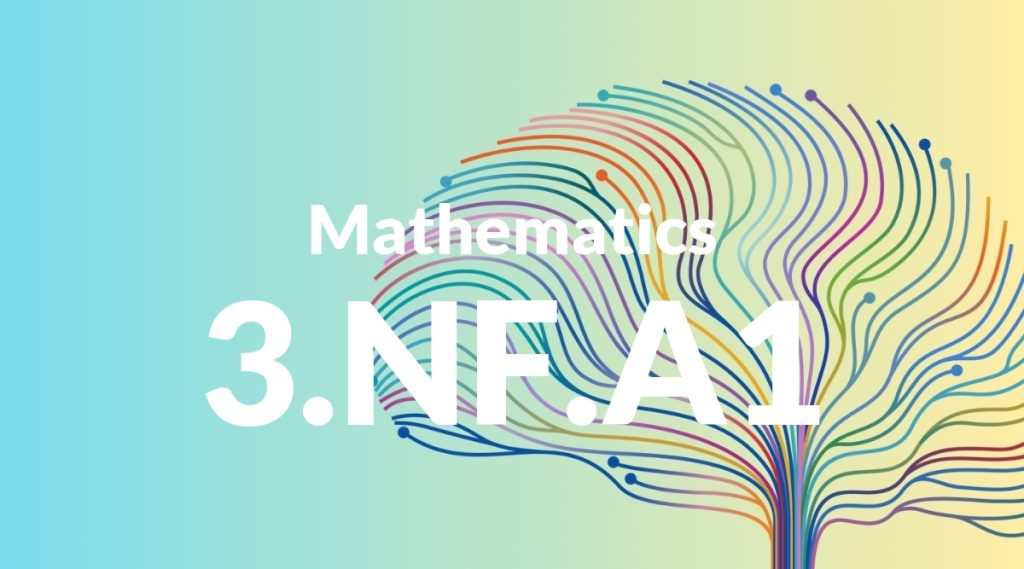Standard: 3.NF.A1 – Understand a fraction 1/b as the quantity formed by 1 part when a whole is partitioned into b equal parts; understand a fraction a/b as the quantity formed by a parts of size 1/b.
Grade level: Grade 3
Subject: Mathematics
Domain: Numbers & Operations – Fractions
Teacher Overview
This standard focuses on helping students understand the concept of fractions, specifically the meaning of the numerator and denominator. It is crucial because it lays the foundation for more advanced fraction operations and understanding in later grades. Students should be comfortable with whole numbers, simple division, and the idea of partitioning objects into equal parts.
After mastering this standard, students will move on to comparing and ordering fractions, as well as performing operations like addition and subtraction with fractions.
Common Misconception 1
Some students might think that the denominator represents the number of parts rather than the size of each part. This misconception can lead to errors in understanding how fractions compare to each other.
Intervention 1
To address this, use visual aids like fraction circles or bars to show that the denominator indicates the number of equal parts the whole is divided into. This helps students see the size of each part.
Common Misconception 2
Another common misconception is that a larger denominator means a larger fraction. Students may not realize that the more parts a whole is divided into, the smaller each part becomes.
Intervention 2
Compare fractions with the same numerator using visual models. This helps demonstrate that a larger denominator actually means smaller parts, clarifying the misconception.
Prerequisite Knowledge
Students should have a basic understanding of whole numbers and simple division. They should also be familiar with the concept of equal parts and basic counting skills.
Subsequent Knowledge
Students will develop an understanding of comparing and ordering fractions, as well as adding and subtracting fractions with like denominators.
Instructional Activities
- Use fraction circles or bars to visualize fractions.
- Create a fraction wall to compare different fractions.
- Have students divide objects like pizzas or chocolate bars into equal parts.
- Use interactive fraction games online.
- Practice identifying fractions in real-world contexts.




